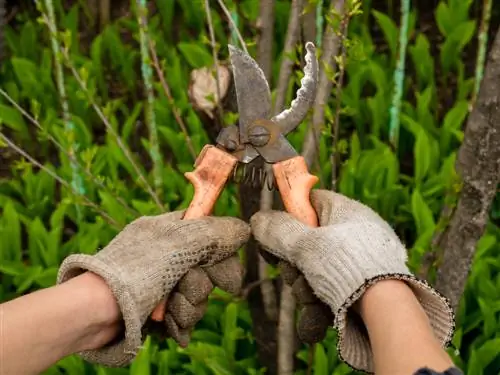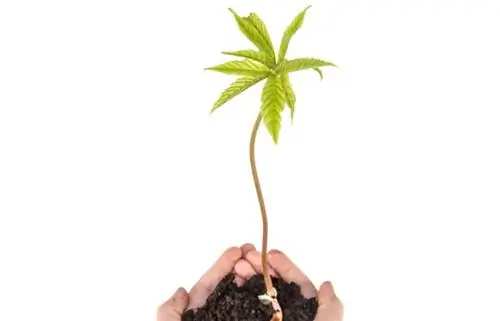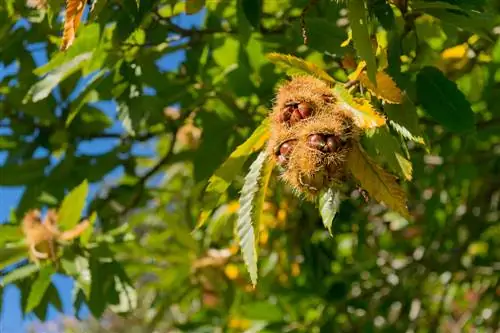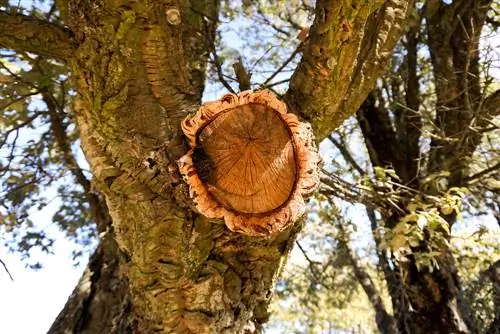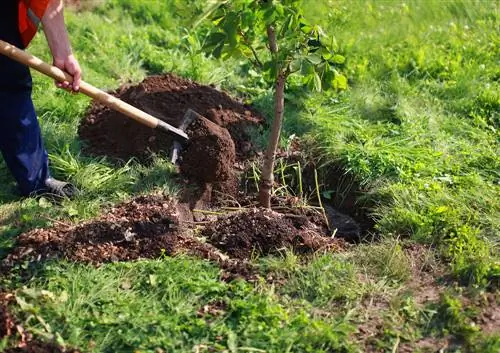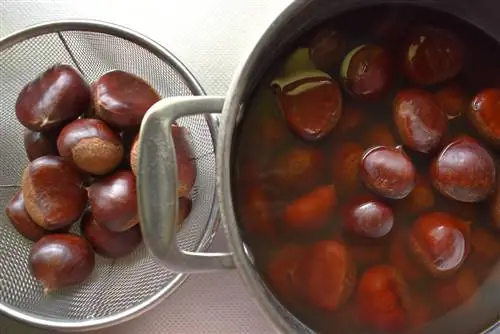- Author admin [email protected].
- Public 2023-12-16 16:46.
- Last modified 2025-01-23 11:21.
There are a variety of answers to the question of whether you should prune your chestnut regularly, depending on who you ask. Weigh the benefits and risks of a cut and then decide for yourself.
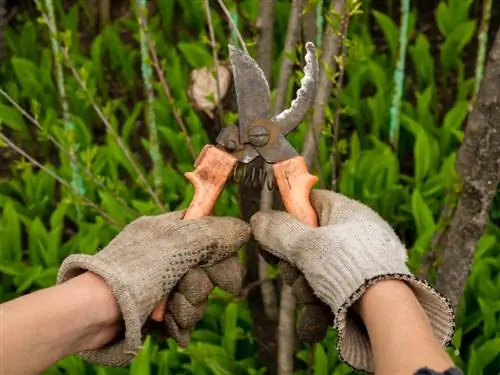
When and how should you prune a horse chestnut?
Horse chestnuts should ideally be cut between October and February to remove diseased or dry branches and thin out the growth. Use clean, sharp tools and preferably cut branches less than 5 cm in diameter.
Cut injuries can certainly be a gateway for various pathogens. The horse chestnut, like the sweet chestnut, is quite sensitive to diseases and various pests. Particular attention is paid to fungal diseases and the horse chestnut leaf miner. The latter occurs predominantly in the common horse chestnut. It hardly causes any significant damage to other chestnut species.
When is a horse chestnut pruned necessary?
It is definitely recommended to cut off diseased or dry branches of a horse chestnut. Very dense growth with lots of water shoots is also a reason for pruning, as is an inharmonious shape.
How should I go about cutting?
So that your horse chestnut suffers as little damage as possible from a cut, you should choose the time carefully. The ideal time for pruning is from October to the end of February or beginning of March. If possible, the temperature should not rise above 4 °C in the following days, this minimizes the risk of a fungal infection enormously.
Only use well-sharpened and thoroughly cleaned tools when pruning your horse chestnut. In this way you contribute to maintaining the he alth of the tree. Because the horse chestnut does not heal wounds particularly well. Unclean cuts heal even worse.
Prune your horse chestnut especially when it is still quite young. If possible, the branches to be cut should not be thicker than about five centimeters. This measurement is difficult to maintain with older trees. In addition, a tree that is pruned early rarely needs major pruning later. Only some thinning may be necessary.
The most important things in brief:
- ideal time for cutting: October to February
- carefully prune younger horse chestnuts
- only thin out older chestnuts
- If possible, only cut branches with a diameter of less than 5 cm
- clean and sharp tools minimize the risk of disease transmission
Tip
The more carefully you prune your horse chestnut in the first few years, the less pruning you will have to do with the older tree.

